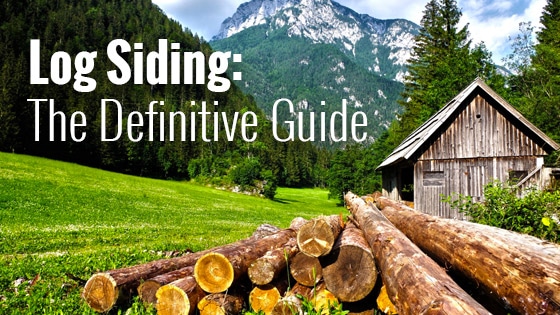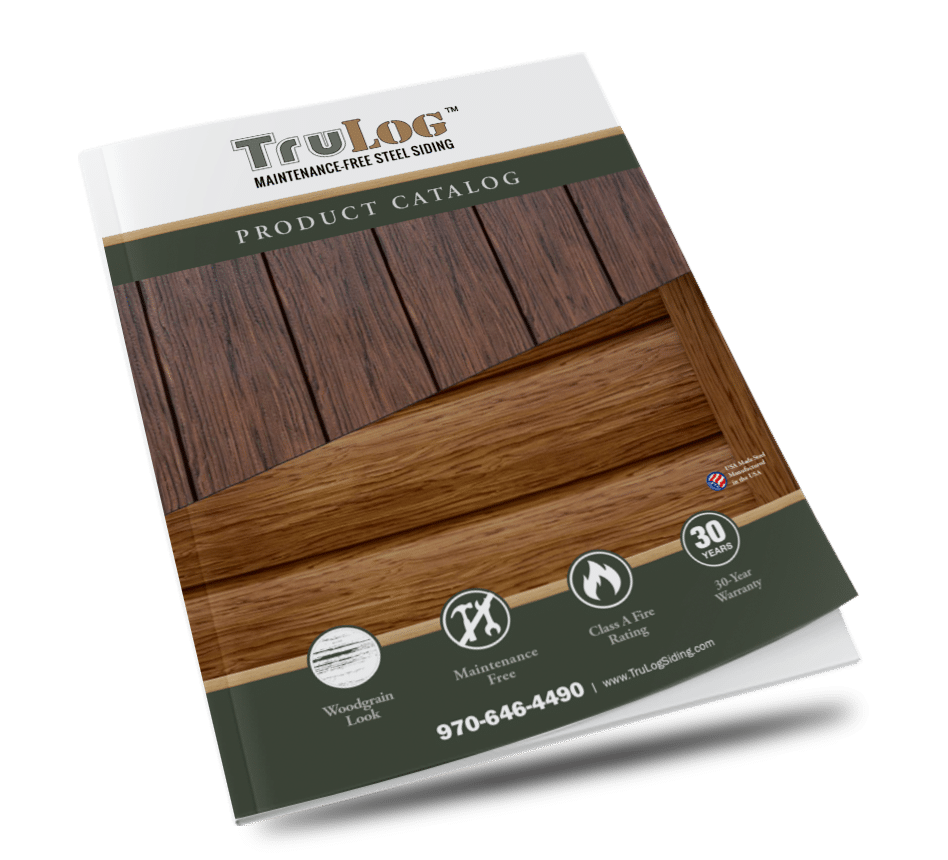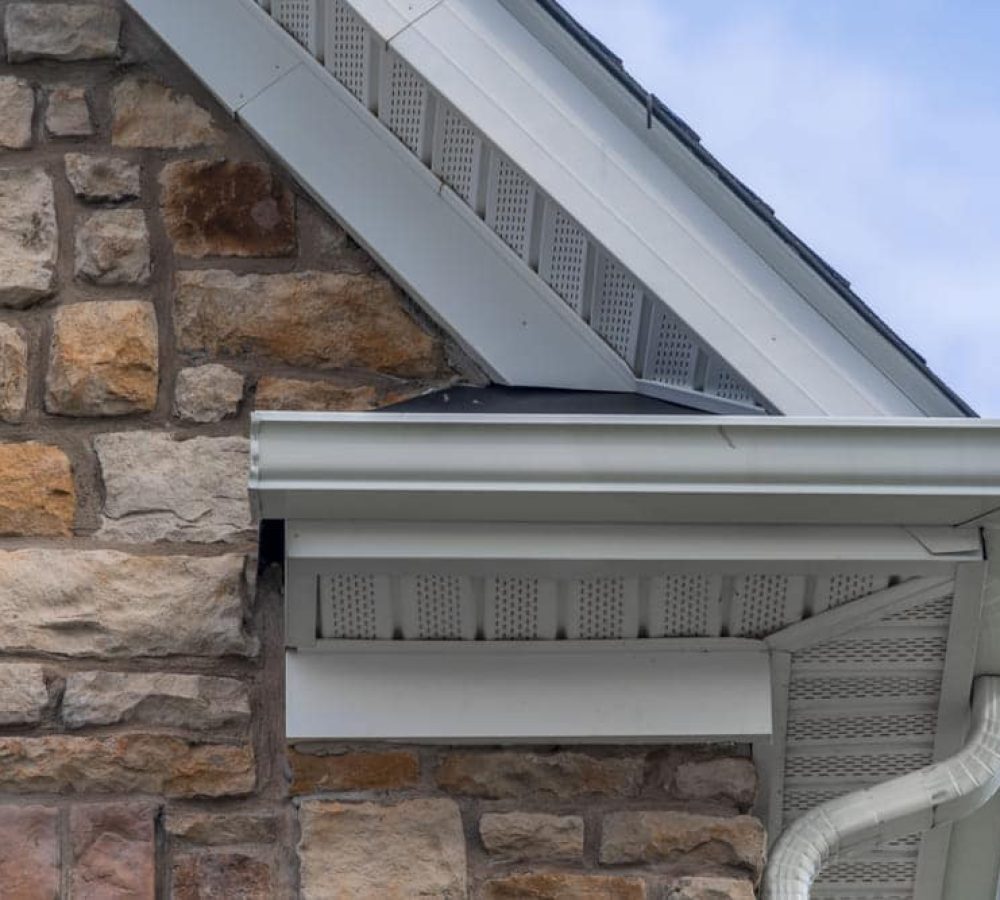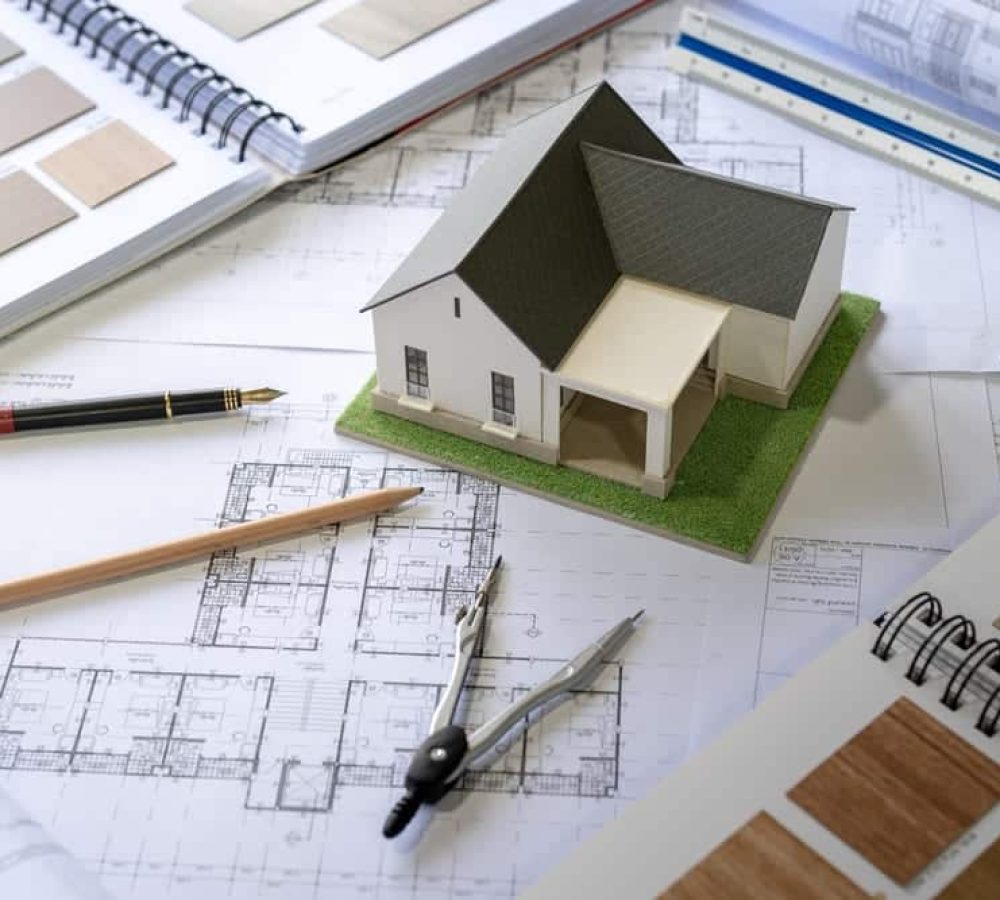Log homes, log cabins, and log siding have been popular looks and styles for decades. There’s something about the warmth and charm of logs and the images they conjure that inspire many people to begin construction on their own log home.
And while originally, to get the look of a log home, you need to actually construct the entire thing from peeled logs, it’s now possible to get the same look from a variety of other materials as well, including many different types of log siding.
Log siding can be applied to existing homes to give them the appearance of a log cabin, but without needing to build from the ground up. This not only can help transform any home, it can also help keep expenses down, and in the case of some materials, it can also help with long term maintenance and energy costs as well.
A Brief History of Log Siding

Evidence of log cabins and homes has been found in Scandinavia dating back thousands of years. In fact, the earliest log homes that have been found date back to around 3500 BC.
In America, log homes were likely brought into use by Scandinavian settlers who built the homes when they first arrived, using the same techniques perfected through thousands of years of use. The same interlocking joints that hold the logs together that is still used today were likely introduced by the Fins.
Log cabins gained a reputation for a rural style and beauty that quickly made them a popular option throughout the country. Along the way, the cabins quickly moved from a perception of a rough hewn and practical method for home building, to something considered a luxury, or something that was desired and difficult to obtain.
Overtime, log cabins began to become more expensive, as well as luxurious and much larger. Different styles of construction were developed, as well as different woods being used. Log cabin kits were developed that could allow homeowners to create their own dream home, and the style of architecture took on new popularity across the country, from small cottages to very high-end resort-style vacation homes.
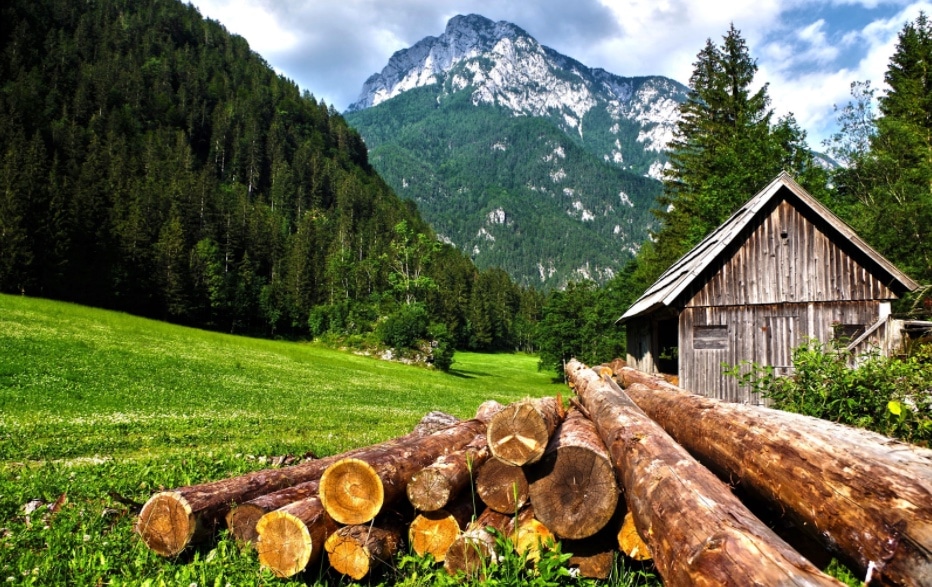
While log cabins are extremely desirable for their romantic history and beauty, they also have a lot of drawbacks, including the expense of building them, and the difficulty of completely sealing and insulating the walls of the home to keep out wind, rain, and cold. When using solid logs to construct a wall, there’s little room for finishing and insulation that can help to create a tight building envelope – a necessity in today’s world of rising energy costs. Log homes are also less eco-conscious to build, as they require many logs that can all be milled to the same size and shape. This is an expensive and sometimes wasteful proposition, depending on the type of logs being used.
For these reasons, many builders began to turn to log siding and log-look siding to give homeowners the look of a real log cabin, but with better results, less maintenance, and lower costs. Using log siding, you can change the look of an existing home, without needing to rebuild. You can also get a tighter building envelope, which can help result in lower energy bills.
Today, log siding can be found in several different shapes, installation styles, and even materials. You can get the look of a log cabin much more easily and with much better results than were previously available, allowing you to transform your existing home regardless of current size or architectural style.
Styles of Log Siding

While constructing a home out of real logs can limit the ultimate look of the finished home, using log siding can give you a few different looks and styles, depending on the style and shape of the siding you choose. Unlike whole, peeled logs, log siding is available in a few shapes and installation styles to choose from. And because log siding is always milled to be consistent, you can get a more even and easier install than real logs can provide.
Different styles to consider include:
- Half logs: This type of log siding is just what it sounds like; a split log of siding that installs flat up against your home, giving you an authentic look at a much lower cost.
- Quarter logs: This is a smaller, thinner siding more similar to a veneer than a true log. Quarter logs come in a few installation styles and are generally less expensive and easier to install.
- D Logs: D logs are milled to have a round face, but squared edges. This makes butt-edged installation easier, but with an authentic appearance.
- Chink Joint: If the logs have a chink joint, it means that they have the appearance of having mortar between them.
- Tongue-and-groove: Tongue and groove logs overlap slightly in their installation for a tighter fit and building envelope.
- Confederate V Joint: This type of joint has the logs meeting at a sharper angle, rather than a rounded or straight edge, giving the siding a very distinctive appearance.
Solid or Hollow
Another consideration to make when choosing your log siding is whether the material and the “logs” you use are solid, or whether they are hollow, with only a face veneer.
Solid logs or siding are usually made of wood and are actual, milled logs. They give you the look of a real wood log cabin, but are installed to the existing exterior of a home, rather than being stacked on top of one another and mortared into place.
Hollow siding just gives the appearance of solid wood, but may be made of several materials such as steel. The hollow back of the siding presents the opportunity to have additional insulation material added to the exterior of the home or building. This in turn helps create a more continuous insulation and a tighter building envelope that can help contribute to lower energy costs. Because wood is a poor insulator, using solid wood siding may not provide the same benefits as using some type of hollow veneer with an insulating backing. Solid wood siding can be installed over many types of exterior wall sheathing insulation, which can help solve this problem.
Log Siding Materials
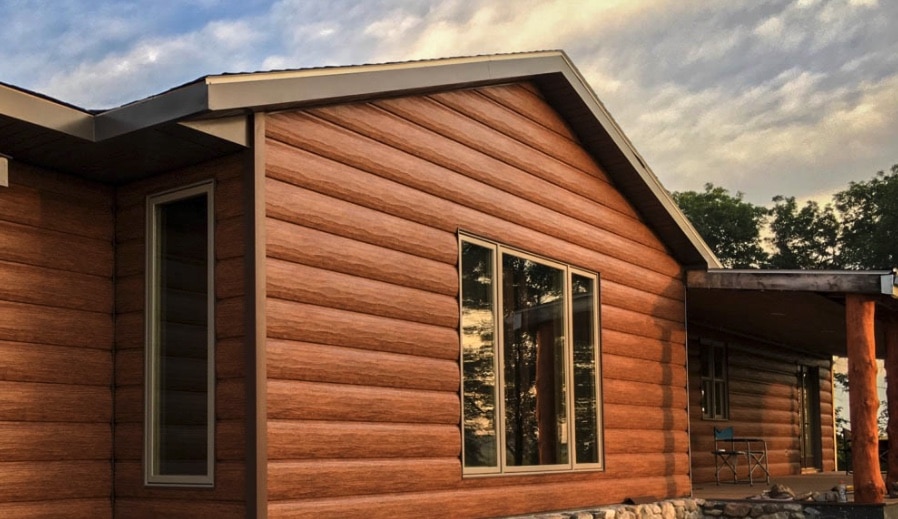
In addition to different styles and installation types, you can find log siding and log look siding in a range of different materials as well. Most of these materials will give you the look of a log home, but will install and perform in different ways.
Wood Log Siding
Wood log siding is one of the most common forms still available. This is made of a variety of different types of wood from cedar to pine, that has been milled into different shapes with even sizes and several different installation styles.
Wood log siding will give you an authentic appearance and can be installed on nearly any type of home. However, it has a lot of the same drawbacks that a traditional log cabin will have as well. The wood may swell and warp with moisture, so it will need to be treated or stained to help protect it from the elements. This stain or paint will need to be reapplied every few years, and between applications, the wood will need to be pressure washed to help prevent staining or discoloration.
Solid wood log siding is also a poor insulator, and can be difficult to get a tight building envelope with. Different types of insulating sheathing can be used with it, to varying results.
Vinyl Log Siding
Vinyl log-look siding is a less known option that requires less maintenance than solid wood. Unfortunately, like other types of vinyl siding, vinyl log-look siding comes with its own range of various issues.
Vinyl does not need painting or staining, and it is not affected by moisture. However, the material is affected by temperature. Very cold siding can crack, while very hot siding can melt, so depending on the climate you are installing in, you may find that the vinyl doesn’t hold up as well long term, cracking, splitting or warping over time.
Vinyl is also a poor insulator, and will require some type of insulating backing to help prevent air and heat transfer through the exterior walls. The final drawback to vinyl siding is its appearance. Like regular vinyl siding, the log-look material is easily identified as being made of plastic. At the same time, the material is usually formed in large, pressed sheets. The joins between the sheets are fairly obvious, while the areas where there would be seams or joins in a real log home, the material is smooth. This leads to a less authentic appearance for the exterior, that can detract from whatever lower maintenance the material may have to offer.
Concrete Log Siding
Engineered concrete log-look siding is another new way to get the look of a log cabin for your home. In this case, modified concrete has been formed to look like real wood, with a texture similar to the real thing. Concrete gives a more authentic look to the home than vinyl, because each piece can be installed separately, with a more authentic looking seam or join between the planks, rather than large, pressed sheets. Unfortunately, concrete is heavy and expensive, and it also has several drawbacks you may need to consider as well.
Concrete can stain, because the material is porous. Therefore, you may need to wash and stain your home on a more regular basis. Concrete also has a poor tensile strength, so it can crack, particularly upon impact. The material is also susceptible to freeze/thaw cycles, which can affect some cold climates. In a freeze/thaw cycle, any moisture that gets into the cracks of the concrete can freeze and expand, splitting apart the siding and causing serious damage that will require repair each spring. While more durable than vinyl, concrete may still not be the best option depending on the climate your home is located in.
Steel Log Siding
Steel log siding can be a great alternative for those who want the look of a log cabin but with little to no maintenance. Steel siding can be molded to form the look of real wood like concrete, but it is unaffected by moisture or freeze/thaw cycles, so it won’t develop cracks or become damaged in cold climates. Like concrete, steel is also formed and installed with a more authentic appearance, rather than large sheets like vinyl, so you don’t see obvious seams in places where they shouldn’t be.

Steel maintains its color well, without peeling or chipping over time, so you don’t need to worry about reapplying the color, as would be the case if using wood siding. Because steel siding has a hollow back, it can be easily insulated with a high R-value material that can help create a tight building envelope and reduce energy bills in the home.
Steel log-look siding is available in several different colors that also help mimic the look of stained wood, so there’s virtually no difference in appearance after installation – just in the long term performance and maintenance of the product, as well as how comfortable and energy efficient your home is when compared to wood.
Choosing the Right Option
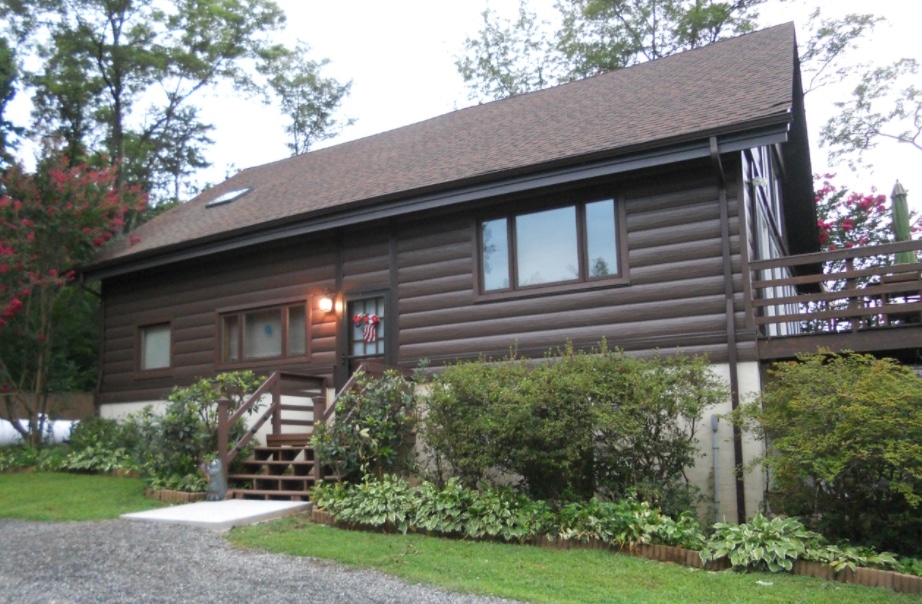
If you are looking to re-clad the exterior of your home, and want to get the look of a log cabin, using log-look siding may be the best option. Using a low maintenance product like steel siding can help you get the look without the many drawbacks and issues that are commonly associated with real wood, while still helping you preserve the look and appearance that you’re interested in.
Regardless of what architectural style your home currently has, cladding it in log-look siding can transform its appearance, giving it the popular and highly sought after look of a log home in a fraction of the time that it would take to build one. Consider cladding your home in log-look steel siding to get the look you want with the performance and function you need to make your home exterior dreams come true.

